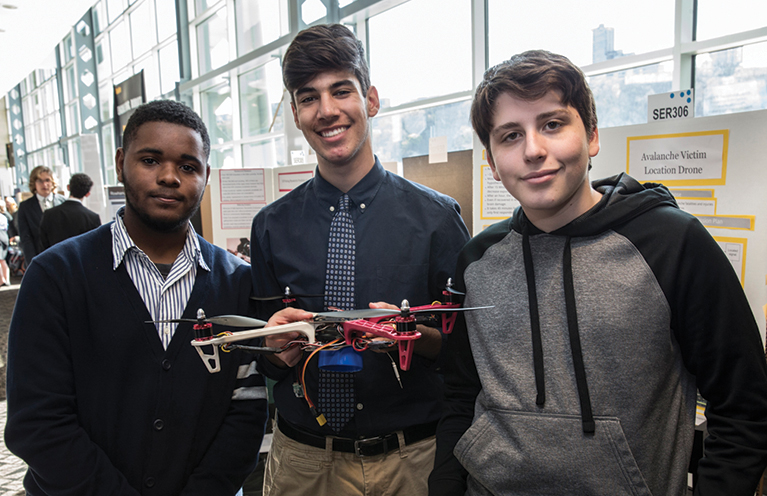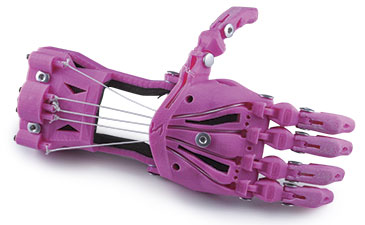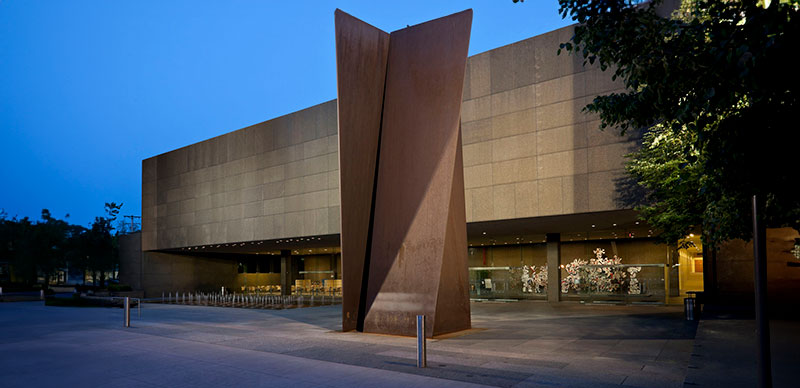When Prussian immigrant John Roebling and his brother Karl settled on 1,600 acres in Butler County in 1832, the Brooklyn Bridge wasn’t even a glimmer in John’s eye. Intending to establish a German settlement far from the political unrest of the Old World, he and his brother took up farming on land they would dub Saxonburg, located about 23 miles northeast of Pittsburgh. But John grew dissatisfied with agricultural work, and in the wake of Karl’s death and with a newborn child to support, he returned to the love of his academic life—civil engineering.
Tinkering with iron wire rope, Roebling came up with a replacement for the less durable hemp rope being used to haul railway cars carrying canal vessels across the Allegheny Mountains between Harrisburg and Pittsburgh. Captivated by the suspension bridges he’d studied in Europe, over the next couple decades he would apply his cabling principles to the erection of the first such bridges in the United States, right here in Pittsburgh, including badly needed replacements for a wooden canal aqueduct spanning the Allegheny River near the present site of the David L. Lawrence Convention Center, and the original Smithfield Street Bridge following its predecessor’s destruction in the Great Fire of 1845.

The original Smithfield Street Bridge, designed by John Roebling, as it appeared in 1880. Its predecessor, the wooden Monongahela Bridge, was the first river-crossing bridge in the city and was destroyed in the Great Fire of 1845. Photo: Archives Service Center, University of Pittsburgh
“He’s really a titan in the industry,” says Carnegie Mellon adjunct professor in the department of civil and environmantal engineering and retired chief bridge engineer Thomas Leech, an author of two books on bridges. “Such a titan that the International Bridge Conference, which bestows awards once a year to engineers from around the world, has a lifetime achievement award named for Roebling. What made him unique is that he developed, by himself, many of the cabling processes that have been used from his time on. He is considered one of the top bridge engineers ever.
“Pittsburgh’s unique geography has required innovative infrastructure approaches. From navigating and crossing rivers to managing floods, traffic, wind, and ice storms, Pittsburgh’s engineers had to use creativity to ‘bridge’ challenges, yet be conscientious enough to retain as much of our natural surroundings as feasible.” – Catherine Bazán-Arias, senior geostructural engineer, DiGioia Gray, Inc.
One-hundred and fifty years after Roebling’s death, a thousand or so potential “titans” stand alongside displays of their own inventions, perhaps dreaming of awards and accolades of their own. Anxiously awaiting word from judges wandering Heinz Field’s club level, these middle- and high-school students from throughout western Pennsylvania and northern Maryland are competitors in Carnegie Science Center’s 78th annual Covestro Pittsburgh Regional Science & Engineering Fair, which awards $1 million in cash and scholarships.

About a thousand regional students compete in the Covestro Pittsburgh Regional Science & Engineering Fair each year.
One potential Roebling of the future, Apollo Ridge High School junior Breanna Murray, explains a poster illustrating three different styles of truss bridges. Concerned about the region’s crumbling infrastructures and the best way to replace them, she’s conducted an experiment to determine which style can bear the most weight. A competing duo, Emily Richard and Connor Ehrgood from Fort Cherry High School in Washington County, demonstrates the “SticKey,” a joystick-type device that enables people with fine motor skill impairments to “type” onto a connected laptop by selecting letters, punctuation, and spacing from color-coded rings arranged according to frequency of usage. Hanna Chen, a Fox Chapel High School freshman, shows how a simple grounding wire attached to the bottom of a shoe can reduce shocks and fires due to the buildup of static energy.
As aspiring engineers, young people like these are getting the chance, in the words of the Science Center’s director of STEM Programs Linda Ortenzo, “to do what engineers do”—imagine a solution, make a plan, and then improve designs to make it better. As up-and-coming innovators of an intellectually fertile region, they are both following in the footsteps of giants and preparing to enter a professional landscape whose boundaries are being expanded at an ever-more-rapid rate.
Taking Flight
Take Paige Kassalen, a 24-year-old electrical engineer and keynote speaker for this year’s science fair. The recent Virginia Tech graduate and Covestro employee assisted in last year’s historic flight of Solar Impulse 2, the first solar-powered airplane to fly around the world without a drop of fossil fuel. Kassalen, the youngest member and the only U.S. female engineer on the ground crew, attended to one of two handling masts meant to ensure that the 5,100-pound craft’s 236-foot wings didn’t tip on takeoff and landing. And she was part of a team of electrical engineers who distributed power to the 42 fans that inflated the plane’s mobile hangar, which was deployed when there was not an existing hangar large enough to store the plane. When the fans temporarily lost power in Dayton, Ohio, the mobile hangar nearly collapsed, threatening to thwart the 12-year mission. Kassalen and team identified the root cause and implemented a solution to prevent a recurrence. “One of the things I always enjoyed doing when I was younger was being creative and finding creative ways to solve problems,” says the Mt. Lebanon native. “Being innovative—I really learned that that’s what engineering is all about.
Now a market analyst studying “the future of mobility” for the advanced polymer producer, Kassalen is busy applying her know-how and environmental awareness to the emerging industry of autonomous cars, exploring how the company’s high-tech materials can help solve technical challenges in developing the next generation of vehicles, much like they did for Solar Impulse.
“Our industry continues to strive for sustainability targets and drive change, says Kassalen. “And I’m thinking that is so much of what Pittsburgh does, because it’s gone through so many reinventions—from steelmaking to being the ‘Silicon Valley of the East.’”

University of Pittsburgh biomedical engineer Robert Gaunt (center) and team tests Nathan Copeland’s ability to detect touch by tapping fingers on a robotic hand. Photo: UPMC/Pitt Health Sciences
If Pittsburgh is indeed deserving of such monikers, surely the world-class biomedical community anchored by the University of Pittsburgh and its associated hospitals is one of the reasons why. That’s what drew biomedical engineer Robert Gaunt here from western Canada in 2008. Now an assistant professor in the medical school’s department of physical medicine and rehabilitation, Gaunt is part of an interdisciplinary team using the relatively young science of neural engineering to develop a brain-controlled robotic arm for patients who have lost the use of upper extremities due to spinal trauma, amputation, or stroke.
“What we want to do is to remove the barriers of disease or injury,” he says. “Mobility of the arm and hand—these are the functions we want to give back to people who have lost them.” Gaunt’s role is “on the sensation side—we want them to feel it as if it’s their own arm or hand.”
Currently working with Nathan Copeland, a young man whose ability to control his hands and sense what his fingers are touching were lost in a car accident 15 years ago, Gaunt and team—including a neurosurgeon who implants electrodes that deliver signals directly to and from the patient’s brain—have made huge strides in this burgeoning field. In a videotaped demonstration for NPR last year, a blindfolded Copeland correctly identified which of the fingertips on the robotic arm was being manipulated by Gaunt.
Thinking back on his move here nine years ago, the Victoria native remembers thinking of Pittsburgh as “just a city in the middle of the U.S.” But it wasn’t long after settling in Forest Hills that he discovered such landmarks as Westinghouse Electric’s nearby “atom smasher,” which marked the beginning of nuclear research for civilian applications. “It’s fun to learn about the reach of engineering worldwide, and to realize that much of the success of Pittsburgh is because of its history of engineering.”
Further east, at the Monroeville offices of DiGioia Gray, Inc., senior geostructural engineer Catherine Bazán-Arias is working at the interface of geology and structural engineering to design and assess the stability of foundations as they relate to the structures above them. Applications in this critical field range from determining the cause of cracks in homes to shoring up failing bridge supports.
In one project, Bazán-Arias, who was named engineer of the year by the Engineers’ Society of Western Pennsylvania (ESWP) in 2015, recalls having to address a utility company’s failing power lines, which had been built on limestone eroded by water, known as karst. Working with natural materials and special equipment to modify the landscape, she and her team were able to “compensate for the properties karst doesn’t have,” thereby saving the lines. In another job that would be named the ESWP’s project of the year in 2012, she helped develop the software and analytical tools needed to quickly mitigate settlements occurring during the construction of an electrical substation due to previously unrecorded mines. The salvaged substation has been up and running now for several years.
After earning multiple degrees at the University of Pittsburgh, the Mexico City native remembers considering all the places she might live and work. But having made Pittsburgh her home for the past 34 years, Bazán-Arias has come to view it as special. As she sees it, “Pittsburgh’s unique geography has required innovative infrastructure approaches,” says Bazán-Arias. “From navigating and crossing rivers to managing floods, traffic, wind, and ice storms, Pittsburgh’s engineers had to use creativity to ‘bridge’ challenges, yet be conscientious enough to retain as much of our natural surroundings as feasible.”
Dreaming Big
It wasn’t long after John Roebling had completed the last of his Pittsburgh bridges and was setting his sights elsewhere that another local visionary found himself considering a problem highlighted by a horrific railway accident. George Westinghouse, Jr., a Civil War veteran and college dropout from upstate New York who’d moved to Pittsburgh to improve his professional prospects, was only 22 when he decided to put his childhood interest in mechanical engineering to work by designing a new braking system that distributed compressed air more efficiently throughout a train’s cars. The adoption of his “air brake” as an industry standard—making braking safer, which permitted trains to travel at higher speeds—and the formation of the Westinghouse Air Brake Company set him on his path.
“He came to Pittsburgh because this was the place where a young engineer might get backing. So, the thing from the get-go is that he had this spark that all engineers can understand.” – Rick Sebak, Pittsburgh documentarian,on George Westinghouse, Jr.
Although Westinghouse, like Roebling, would become known far beyond western Pennsylvania, in part for his long-running professional feud with electrical pioneer Thomas Edison—a competition that ultimately resulted in Westinghouse’s AC system of distributing electricity winning out over Edison’s better tested but more geographically-limited DC system—it was here in Pittsburgh that he would make his greatest mark. From the Point Breeze park where his estate once stood to the Cranberry-headquartered company that still bears his name, his local legacy is widespread.

The machine shop at Westinghouse Air Brake Co. in Wilmerding, which employed about 3,000 people. By 1905, the date of this photo, more than 2 million freight, passenger, mail, baggage, and express cars and 89,000 locomotives were equipped with the Westinghouse Quick-Action Automatic Brake. Courtesy of usgwarchives.net/pa/allegheny
“He came to Pittsburgh because this was the place where a young engineer might get backing,” says Pittsburgh documentarian and WQED-TV producer Rick Sebak. “So, the thing from the get-go is that he had this spark that all engineers can understand.”
That spark is captured for the big screen in Dream Big: Engineering Our World, the current hit at the Science Center’s Rangos Omnimax Theater. It’s a high-energy tribute to the ingenuity and tenacity of engineers throughout time—from the ancient Chinese, who used sticky rice in their mortar to render the Great Wall better able to withstand extreme temperature fluctuations, to the team of Arizona high school students who, when faced with a leaking submersible robot at a national robotics competition, used feminine hygiene products to not only keep their invention functioning but enabling it to edge out an MIT team for first place.

Emilie Whitewolf, 13, participates in the Dream Big Girl’s Night Out Design Challenge at Carnegie Science Center. Photo: Nic Lockerman
“For some young people, their experiences in these programs ignite a career path they never would explore otherwise.”
– Linda Ortenzo, The Science Center’s director of STEM Programs
As Ortenzo sees it, experiences like those offered by such competitions—many of which are hosted by the Science Center regionally—are “transformative.” More broadly, the Science Center’s longtime embrace of science, technology, engineering, and math (STEM) educational initiatives, offered collaboratively under the umbrella of its Chevron Center for STEM Education and Career Development, inspires young people to create solutions of their own.
In a region known for its illustrious engineering past, Ortenzo realizes the value of educating students in both the rich legacy and promising future of STEM.
“For some young people, their experiences in these programs ignite a career path they never would explore otherwise,” says Ortenzo. “They learn the surprisingly diverse and invaluable roles that engineers play. And they discover that nearly everything they do or touch has engineering involved in it.”
Dream Big: Engineering Our World is sponsored locally by Agora Cyber Charter School.







